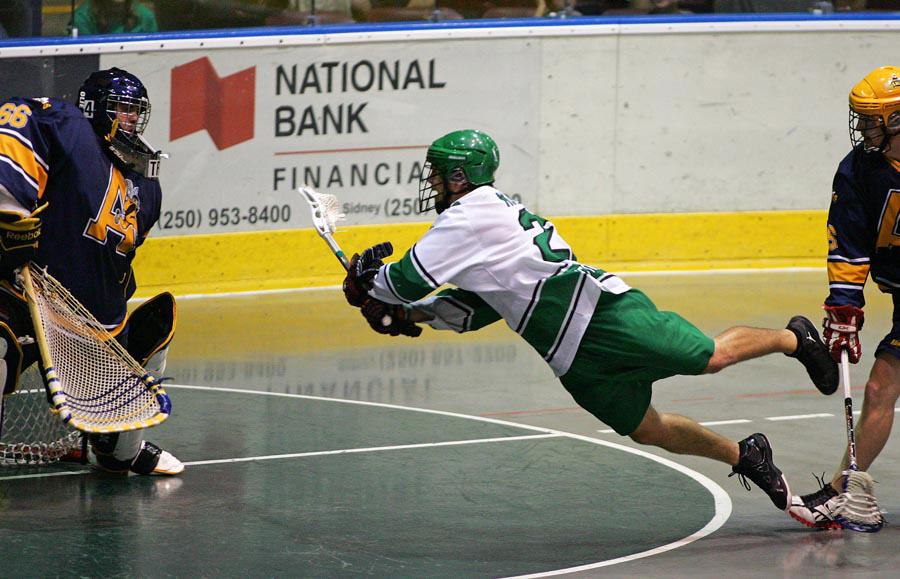Fundamental Skills Analysis:
Offense
- Ultimately, the lacrosse stick needs to become an extension of a player’s body, able to act and react with ease to the varying demands of the game. In order for this to happen player’s need to become masters with their Stickwork, which takes thousands of hours of practice to accomplish. Even professional players still take the time to throw the ball against a wall in order to perfect their release point on a particular stick (prior to playing a game). There is no excuse for a stick to be “hooking” prior to game time; especially when players have had many days is advance to fix their sticks. Players should always have 2 game-ready sticks available at any practice/game.
- There are many different styles of offensive players: “finishers” at the crease, passers/feeders from the “half-board” to the point, there’s the big shooters from the “corners,” and then there’s the all-around athlete that that scores from the perimeter and the middle (inside-out). There’s the power forward that crashes and bangs in the middle getting their teammates open shots with good picks/seals; and there’s also the speedsters that create flow, get open off-ball, and scoop timely offensive loose balls.
- Professional offensive specialists are at least status quo when it comes to all of the different attributes listed above, usually with some of the best stick skills (precision & accuracy) on the team. Aside from that, no two individual’s strengths, weaknesses or skill-sets, are ever the exact same; they can be similar, but never the same (different execution/style). Some of the most nonathletic looking players can be very effective on offense if they find a "role" and/or know how to use their strengths, including lacrosse IQ, effectively.
Intelligence is essentially the biggest difference maker, knowing what to do and when to do it, being agile, clever and maneuverable (able to shoot from different angles). Knowing what the defense wants to do, where the “soft spots” are, how to create “time & space,” as well as being unpredictable despite what the “scouting report” may say, are all key.
The pressure is on. Offenders need to score early for their team, which can change the dynamic of the game (some offenses don’t play well when trailing on the scoreboard). They also need to be able to answer with goals that stop the momentum of the opposing team, and they need to be able score goals in the clutch, timely goals late in games when the score is close.
Offensive players need to be willing to do whatever it takes to “be a threat” and get quality shots in the “prime scoring area,” which means being physically tough and willing to “pay the price,” as they say. They also need to be mentally tough and able to pull things together when things don’t seem to be going right. The amount of bruises an offender has at the end of a game is normally a good indicator as to whether or not they had a good game.
The key to successful team offense is lots of motion (hard work) combined with sound pick-and-roll game, reverse transition “responsibility,” and most importantly, execution. There has to be the right mix of players, playing different roles set forth by the coach, with all players amply motivated to create “high percentage” shots for themselves and more importantly, for their teammates.
- Categories: Free / Beginner / Drillbook / Offensive

